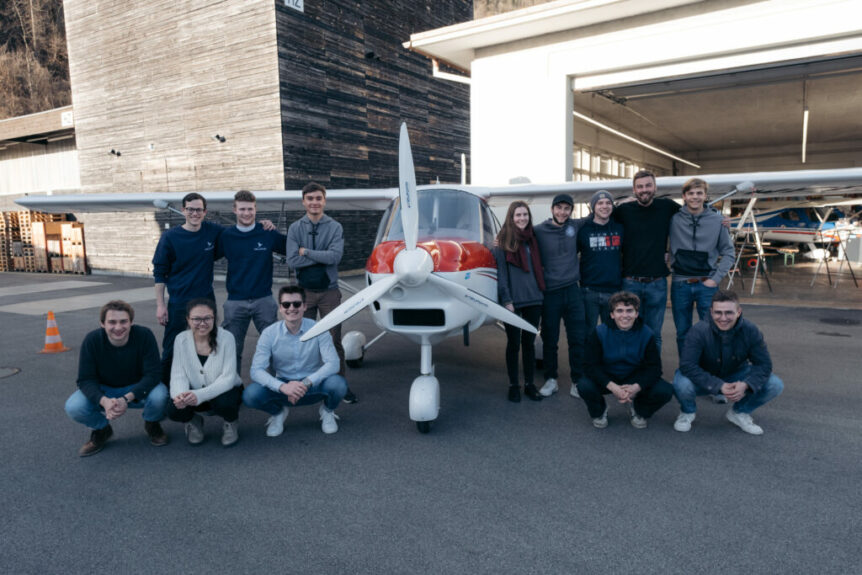The Cellsius AC4 Lightwing is a capable microlight aircraft popular in Europe. As part of a project to clean up aviation, it will fly on hydrogen, and for good distances if students at ETH Zurich* are successful in their project.
Students are modifying a Lightwing to run on pressurized H2, and crafting motor, fuel system, tanks, power electronics, and battery backup system to make a coordinated, custom-fitted craft. It will stay aloft for two hours and emit nothing but water vapor.
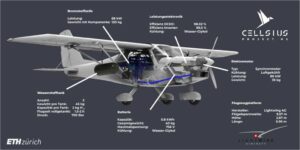
The project’s web site spells out the students’ ambitions. “Our powertrain consists of many components that together can get an aircraft into the air.
“To make this a reality, we develop the majority of our components ourselves, tailored to our requirements.”
Components include a radial-flux motor, unusual in that most electric aircraft motors are axial flux. Students worked with e+a (Elektromaschinen und Antriebe) AG to design and construct the unit. With that motor, students helped design a matching inverter and motor control system.
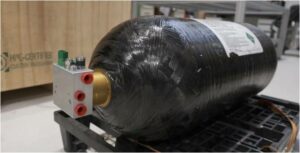
Because of high pressure (700 bar), 1,015 pounds per square inch, H2 tanks are heavy, despite being made of filament wound composites.
High-pressure (700 bar or 10,150 pounds per square inch) hydrogen tanks hang on each wing, each weighing 45 kilograms (99 pounds) and holding two kilograms (4.4 pounds of H2). This is good for an endurance of two hours and a range of 250 kilometers (155 miles).
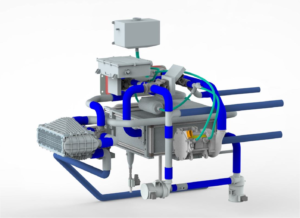
Fuel cell system is heart ETH’s AC4
H2 is fed through a 68 kilowatt fuel cell system which in turn generates electricity to run the motor. The fuel cell also powers the 5.8 kilowatt-hour battery pack which acts as backup during motor starts and “go-arounds” on missed landings. The fuel cell recharged the liquid-cooled pack in flight.
Finally, the power electronics module is a big part of the craft. “To operate an AC motor with batteries and a fuel cell, an inverter and a DC/DC converter are essential. Both are developed by ourselves so that they fit our engine, battery and fuel cell perfectly.”
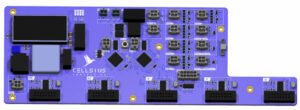
Student-designed electronics include power module, Dc to DC converter and motor control
That the students managed to develop a Lightwing in the same weight range as the Rotax-powered original is noteworthy. Their clever engineering and ability to run a complex development program seems matched by their care. The team took delivery of some shipping containers last December to contain the fuel system under test, the containers able to contain H2 leaks or even blasts safely.
Since then, they’ve visited the Lightwing factory to become acquainted with their intended testbed. Lightwing is excited to be a part of this pioneering effort, noting on their web site, “Together with mechanical and electrical engineering students from ETH Zurich, we are working on the vision of operating climate-neutral, efficient and sustainable aircraft in the coming years.
“The Cellsius Project H2 is conducting research on an alternative hydrogen powertrain to power a light aircraft in the future. The powertrain with accompanying sub-systems will be optimized for the Light Wing AC4 and will serve as a test platform.
“As a Central Swiss company, we are delighted to be part of this innovative project.”
In essence, the team promotes and their project adheres to the United Nations’ Sustainable Development Goals, and can’t help but make the world a better place in which to live.
*ETH Zurich (English: ETH; Swiss Federal Institute of Technology in Zürich; German: Eidgenössische Technische Hochschule Zürich) is a public research university in Zürich, Switzerland. Founded by the Swiss federal government in 1854, with the stated mission to educate engineers and scientists; the school focuses primarily on science, technology, engineering, and mathematics, although its 16 departments span a variety of disciplines and subjects.– Wikipedia

